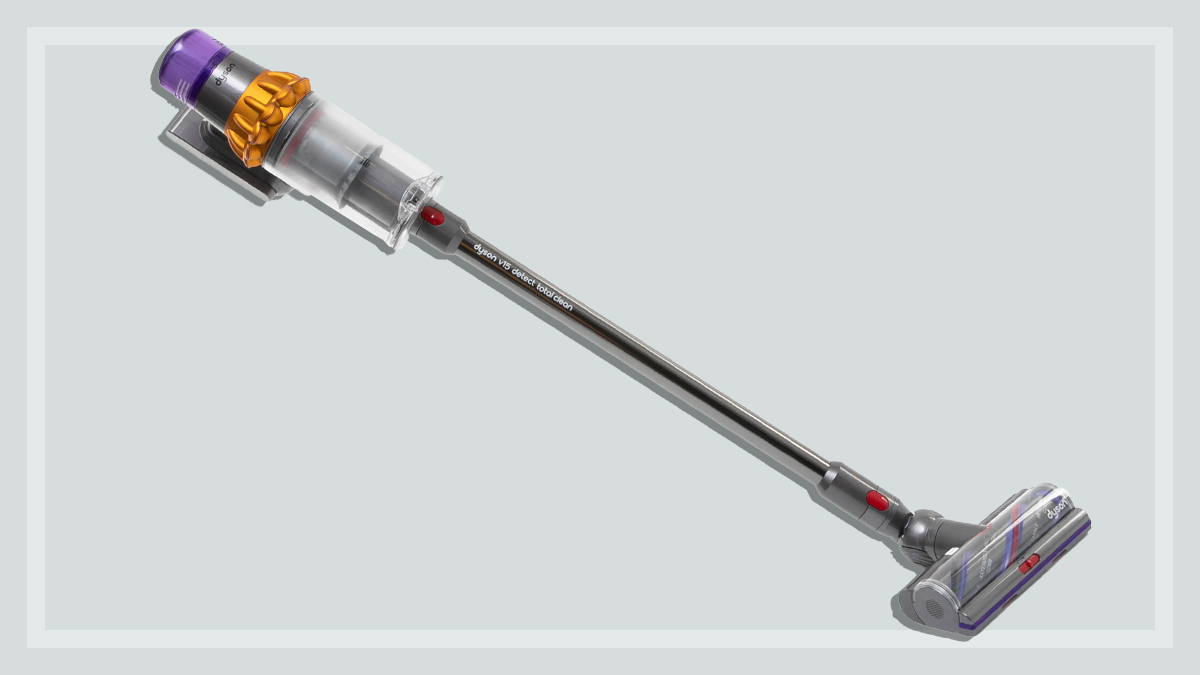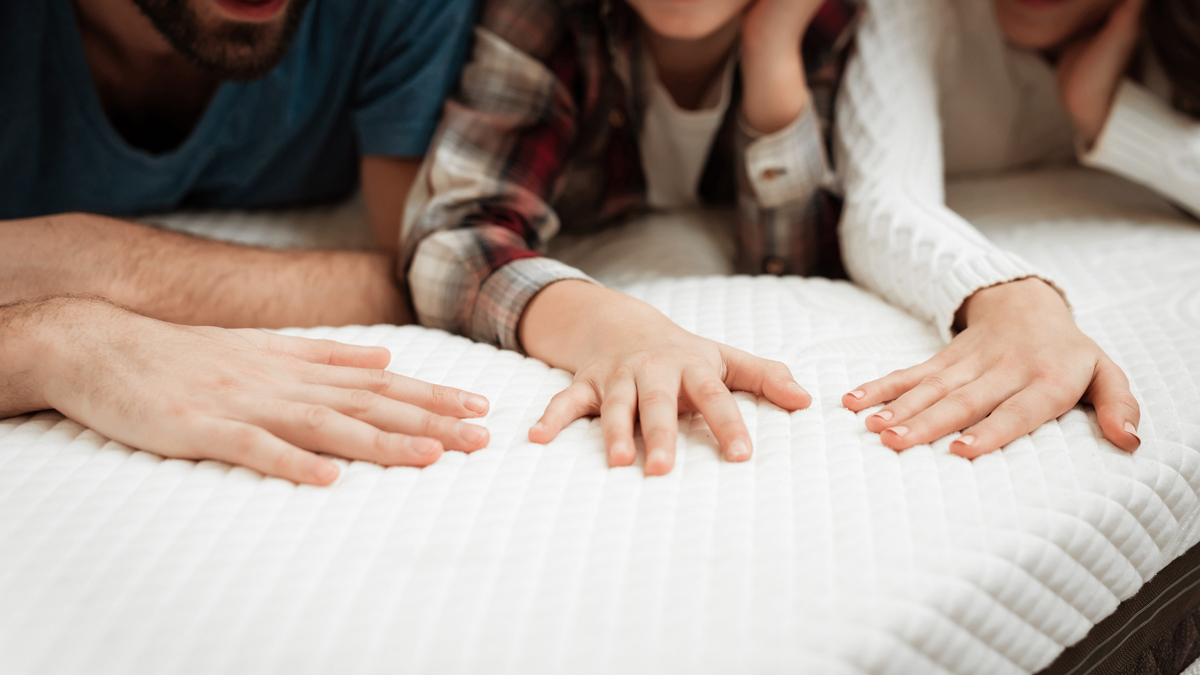Get our independent lab tests, expert reviews and honest advice.
How to clean your mattress

Need to know
- Our mattresses will smell nicer and last longer if you clean it twice a year.
- You can use typical household items like a vacuum, dishwashing liquid, vinegar and bicarb soda.
- Some stains require stronger chemicals that you can buy over the counter at supermarkets or pharmacies.
On this page:
- How often should you clean your mattress?
- How to clean a mattress – what you need
- How to give your mattress a regular clean
- How to clean light to moderate mattress stains
- How to remove urine, vomit and blood stains from your mattress
- Do you need to flip or rotate your mattress to keep it clean?
- Should you put your mattress on the floor?
Did you know that the average lifespan of a mattress is eight to ten years? That’s over 3000 nights’ worth of hair, skin and other bodily things building up on top of, and inside, the mattress. You may remember to shower every day, but when was the last time you gave your mattress a good clean?
An occasional scrub with typical household items will extend the longevity of your mattress and remove unpleasant odours. Deeper cleans can help deal with stains that have developed over time.
In this article, we take you through the best methods for cleaning your mattress, look at how often you need to do it, plus some other tips for keeping it in tip-top shape.
How often should you clean your mattress?
Mattresses need to be cleaned twice a year, regardless of the material. A thorough clean can take up to 24 hours and the mattress can also benefit from some time in the sun. So, check the weather forecast, try to do the job on a warm sunny day, and make sure you have another place to sleep that night.
To keep your mattress at its best, try to remove liquids, dirt, grime and bodily fluids as quickly as possible – your chances of completely removing the stain decrease the longer you put it off.
How to clean a mattress – what you need
These are the regular household or over-the-counter items you may need to clean your mattress. The best product for the job largely depends on whether the mattress just needs a little tidy or if there are significant stains to deal with.
Cleaning a mattress – what you need
Regular clean: bicarb soda, vacuum cleaner, the sun (UV light).
Light to moderate stains: dishwashing liquid, diluted vinegar, upholstery or enzyme cleaner.
Heavy stains: dishwashing liquid and vinegar blend, bicarb soda and water paste, hydrogen peroxide (3% 10vol).
Pet owners, keep your four-legged and feathered friends away from the mattress during this process. The last thing you want is a fresh layer of fur on your nicely cleaned bed.
How to give your mattress a regular clean
Simple cleaning only requires a washing machine, vacuum cleaner, bicarbonate soda and the sun – though you can skip the sunlight exposure if it’s overcast. Take the opportunity to air out your pillow as well.
1. Wash the bed linen
Even though you’re probably washing your doona cover, fitted sheets and pillow slips on a regular basis, it’s easy to forget about the topper/protector or cover if you have a foam mattress. Before you start, strip the bed and wash your sheets, along with any mattress toppers or protectors you have on the bed.
2. Vacuum the mattress surface
Pop on your vacuum cleaner’s upholstery attachment, switch it to the relevant cleaning mode (models vary) and vacuum the top and sides of the mattress. If your bed is on a base, tilt it to the side and clean in there too. This will help get rid of any dust mites.
Use the nozzle fitting on your vacuum if your mattress has a thick pillow top or pattern with lots of grooves and indentations. The upholstery attachment can’t get into all those nooks and crannies effectively.
Avoid the regular turbo head that’s used to clean your carpet. It isn’t very effective on upholstery and may damage the mattress.
3. Deodorise the mattress
This will help clear up any odours. You’d be amazed by how much stink is absorbed, especially during a particularly sweaty summer.
First, move the mattress outside into direct sunlight to take advantage of those sweet UV rays. Leave it there for a few hours, because the UV can help sanitise your mattress, not unlike hanging clothes on the line.
Using the sun isn’t essential and may not be an option depending on your living situation. But if you have enough room on your balcony or in the yard, it’s well worth doing. Just keep an eye out for bad weather or animals that might feel like a nap.
Move the mattress outside into direct sunlight to take advantage of those sweet UV rays
You could also try moving the mattress next to a large window that lets in lots of natural light, though this method won’t be nearly as effective. Windows are designed to partially filter out UV rays – which is why you don’t cop sunburn sitting on the couch in the middle of the day.
Now move it back into the bedroom and sprinkle a hefty helping of bicarbonate soda across the surface. Leave it to rest for 24 hours so the bicarb can do its thing.
4. Vacuum the mattress again
Vacuum the mattress one more time to suck up the bicarb and any latent fuzz that may have floated in. Then pop your freshly washed mattress protector and sheets back on.
How to clean light to moderate mattress stains
Drool, sweat, food and gunk from dirty or muddy clothes, tend to be the main culprits behind light to moderate stains. You can sort these types of stains out with one of these cleaners that are likely already in your home:
- A small squirt of mild dishwashing liquid diluted in one cup of water.
- Distilled white vinegar diluted with equal parts water.
- Upholstery or enzyme cleaners.
It’s best to clean the affected area as soon as possible. The longer you wait, the harder it will be to lift the stains and they may become permanent.
Spray or dab a small amount of cleaner directly onto the stain then gently blot the liquid away from the mattress. Repeat this step until the stain lifts and then begin again on the next stain.
It’s important to keep the mattress as dry as possible, especially foam mattresses. Don’t force liquids into the material and don’t let the moisture linger. If the stain won’t lift, try a different cleaner or move onto one of the more heavy-duty options below.

How to remove urine, vomit and blood stains from your mattress
These fluids require a bit more attention as they become quite unhygienic if left unattended (and they can also smell awful). You need to deal with these stains immediately because the more they linger, the greater the risk of bacteria and unwelcome smells sticking around.
First, grab a bucket, towel and a pair of gloves and gently scoop up any excess fluid, solids and so on. Soak up the remaining liquid with the towel without using too much force as this will just push the liquids deeper into the mattress.
Deal with these stains immediately because the more they linger, the greater the risk of bacteria and unwelcome smells sticking around
Now it’s time to clean. Start by trying the household items above. If they don’t work, combine small amount of dishwashing liquid and a few drops of vinegar with a cup of water, dampen a cloth and gently blot the area.
When you’re done, dampen a fresh cloth with clean water and gently flush the area then apply bicarb soda and leave it to rest.
If the stain doesn’t lift, mix bicarb and cold water into a paste, apply it to the affected areas and leave for 30 minutes. Remove the paste with a damp cloth and repeat this step a few times for very stubborn stains.
Hydrogen peroxide is another popular option for removing heavy stains but it can damage the mattress if applied improperly
Hydrogen peroxide is another popular option for removing heavy stains (particularly blood) but it can cause damage to the mattress if applied improperly. A 3% 10vol solution is ideal and you can buy it over the counter from supermarkets and pharmacies.
To use peroxide, apply a small amount to the stain, let it bubble away for a bit then remove it with a lightly damp cloth. You’ll likely need to repeat this step a few times.
Do you need to flip or rotate your mattress to keep it clean?
Most manufacturers agree that you should rotate your mattress at least every three to six months for spring (coil and pocket) mattresses, and every six months for foam, memory foam, hybrid and latex mattresses.
This extends the life of the mattress as it evens out wear and tear. It can also help keep your body aligned while you sleep as it stops a single sagging point from forming over time.
Foam, spring, hybrid and latex mattresses with a pillowtop don’t need to be flipped
But flipping? That’s become a thing of the past. Pretty well all modern mattresses have a distinct top and bottom, with a pillowtop on one side and other layers specifically designed for base support.
Foam, spring, hybrid and latex mattresses with a pillowtop don’t need to be flipped. However, there are still some that don’t use a pillowtop, like some mattress-in-a-box models, and these may benefit from being turned over. If you’re unsure, check the manufacturer’s website.
Should you put your mattress on the floor?
As far as sleep quality is concerned, putting your mattress on the floor is unlikely to cause you any physical problems unless you have pre-existing conditions. In this case, you should speak to your doctor before trying it, as the hard surface may put more pressure on your body compared to a bed base.
Hygiene, however, is a different story.
Over time, floors tend to gather a delightful potpourri of dirt, fluff, grime and dead insects – not to mention the hair, skin and sweat that falls off your body overnight.
If you really need to keep your mattress on the floor, regularly lift it up and vacuum underneath
There’s very little ventilation for these things to float away or dry when you leave your mattress on the floor. Instead, they build-up over time and eventually you’re looking at an increased risk of mould, visits from creepy crawlies, and possibly bacteria growth, depending on the environment.
Not only does this put your health at risk, it will also damage the mattress. If you really need to keep your mattress on the floor, regularly lift it up and vacuum underneath.






